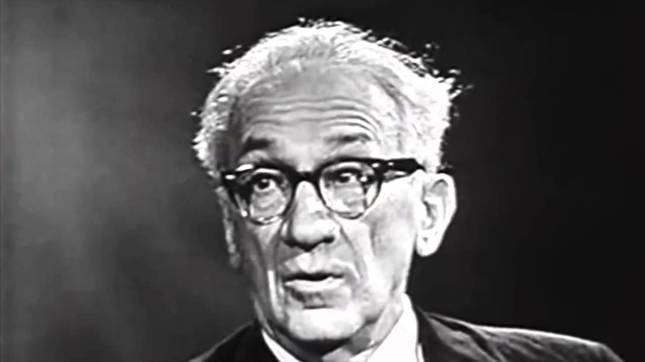
Immanuel Velikovsky is, of all the thinkers mentioned in this section IV, the most “scientific” of the bunch. He was a brilliant man and, until his death in 1979, had the true spirit of science with him. This desire to know Truth carried over from the teachings of, and perhaps due to some of his conflicts with, the Judaism of his family and youth. Born in what was then Russia and now named Belarus, Velikovsky is one of several scientists we discuss who hails from a distinctly Jewish background. This is important to remember not merely from a psychological standpoint, but this also, as you will see, frames the presentation, content, and style of his entire corpus of ideas.
Background
The classic Jewish scholastic tradition, by which I mean only that specific dedication to the written word and the strict, intense and adamant education for children, has produced a disproportionately high number of scholars, scribes, scientists, and men of number, such as bankers, mathematicians, and social scientists; it is also responsible for a large volume of theoretical scientific treatises and systems. It is arguable that no people united by a belief system have come up with as many innovative ideas and subjects of debate. This dedication to letters and emphasis on the importance of reading and writing, while dwindling in adherence just like any other old tradition, still today keeps the Jewish community all over the world at the forefront of all things academic and involving numerical, scientific, and cosmological theory. In a word, this education breeds success.
Since Jews count themselves, indeed are quick to support the claim that they have been an unbroken “us” for at least 3000 years, by virtue not of race or even religion, but rather by a “cultural similarity” that yet screams for all the rights of race, they continue to adopt, and sometimes create, evidence of and for their own continuous existence. To put this a different way, the entire foundation of western science and academic studies is based on an, if not explicit, then surely implicit rendition of history as understood by the Jews and the Judaeo-Christian tradition. This view continues to maintain that today’s “Jews” are the same “Jews” that once compiled Egyptian and Babylonian stories into the Old Testament. The main motto of the ADL is “Fighting Anti-Semitism” but when “Semitic” become equal to “belief in the Talmud” we cannot say.
In a sense all our known history is presented within a framework of the Jewish writings and interpretation of history. It is possible that Christians are only Jews allowed to ignore the Talmud. Furthermore, if we believe the story of Noah and the ark as it is told in Genesis, a recounting of the same tale also found it in Sumerian (see our section on Ziusudra, and here) and Egyptian myths, then every one living today is a descendant of “Noah” – or Utnapishtim, or Ziusudra…or Deucalion, or Etim ‘Ne (“old person”), or Atrahasis, or Nama, or Manu, or…
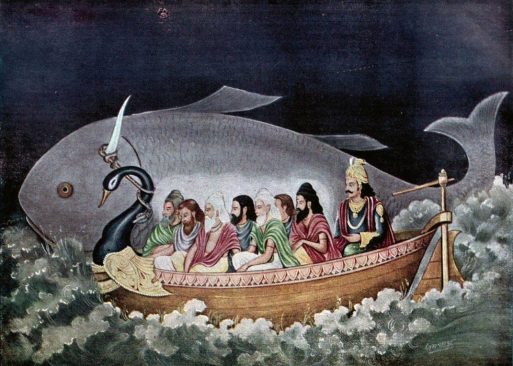
One would do well to write a treatise about the relationship between recorded human history and the beliefs of those doing the recording, whether the writers be victors or not. When one believes himself chosen and counts this an asset, it must be because he holds the chooser in so high esteem. “Yahweh Elohim”, the Judaic creator of the world, or, as we will see, one of the creators of the world, is most likely an amalgamation, assembled from the tales of the Sumerian El, the Zoroastrian Ahura Mazda (Ormazd), and the Egyptians Ra and Osiris. They all, like Yahweh, believed in a god who gives eye for eye and tooth for tooth, who demands sacrifices of body parts and oaths of allegiance, a god mighty, wrathful, at times insane or forgetful, but to believers, the creator and maintainer of the world nonetheless.
Given such a tradition, and the presumption of an actually fair and just God, one could write a treatise detailing the problems with there being any such thing as a “chosen people”, whether in the sense of a particular tribe, clan, race, nation, or even religion. Explaining the logical leap from the theoretical proposition “This X person is a chosen one” to the absolutely racist “All X people are chosen” would be just the beginning of answering for this blatant and obviously contrived bias.

Problems with the accepted account of human history and the “Jewish question” not being exactly relevant here, all I am meaning to bring up presently is the prevalence of this type of thought in the minds of many thinkers, Velikovsky among them. Science, as well as theology, we know, builds upon itself, and often accepts truths as good enough to ground more science and theology based on these truths. If these bases are later deemed to be unstable, whether non-inclusive and incomplete, or unprovable and wrong, or otherwise biased, everything based on them, that is placed on top of these foundations, is also likely to be wrong, or biased. I discuss this need for strong basic foundational ideas, as well as the general concept of “Semitism” further later on, in Chapter X.
Challenging foundations and assumed premises is what great thinkers do, and they usually do it with the knowledge they have already acquired, not knowledge they go looking for. It was a combination of Velikovsky’s acquired knowledge and beliefs and subconscious sympathy with the Jewish history, I believe, that formed his theoretical basis. This basis is, in a word, catastrophism.
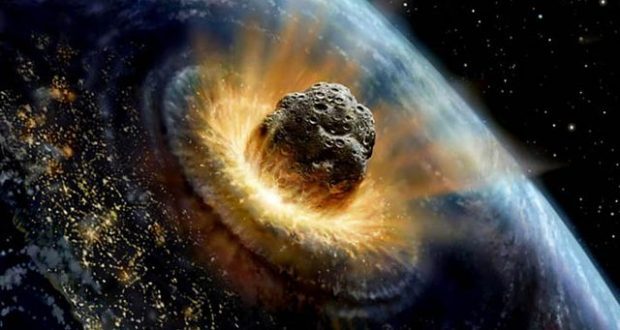
Catastrophism
Catastrophism, obviously, comes from the word “catastrophe”, which we all know to mean a complete and utter disaster. The basis of evolution, of the formation of the galaxies and the Earth itself, and so on, is to this day most often reckoned by science as being due to long, slow, seemingly methodical, even grinding processes. I think it fair to say that this is the complete opposite of the history of change as understood by Velikovsky. From reading Ages In Chaos and Worlds In Collision (allegedly Einstein had it open when he died) I knew right away this man was a world-shaker, a thinker who did not merely ride the coattails of his predecessors. He was going against the grain, shaking the foundations of science itself (something he would do, and be right about, many times), and who was actually using scientific evidence to back up biblical claims that change came suddenly. Specifically, we know, according to many ancient texts and based on the physical evidence we have obtained, that the Earth was devastated at least once by massive floods and destruction, but how this happened, by what mechanism(s) such destruction was achieved, God-inflicted or not, hasn’t been so clear.
Now the reasoning Velikovsky gives for these catastrophes, the efficient cause, is never said to be God himself, but you can almost taste in his books the deity behind the agencies. Meteor strikes and brushes with comets, and the resulting pole shifts, he tells us, are the “real” cause, but I have a sneaky suspicion that he also believed there was a deity behind the destruction, one that set in motion the celestial events ordered to devastate Mankind.

Velikovsky spent much time emphasizing the historian’s reliance on recorded texts and inscriptions, and he further pushed the envelope by insisting that the ancients were not ignorant or liars. For instance, if the old records say there was a flood, or if different legends from isolated parts of the world say it was once dark for months, Velikovsky’s belief was that we should consider these stories to be reportings of real events that actually occurred. A good example are the ancient writings, such as those of Homer, that presumed there once existed a real city of Troy. For many centuries this city was thought by scholars as, and so written into the academic canon as being, “merely” myth, something legendary in a fabulous sort of way, a place with a reality along the lines of Shangri-La, or the Garden of Eden. Trojans, they said, were a people fabricated by patriotic Greeks in need of a formidable enemy to defeat in a major (Trojan Wars) war, in order to fortify their strong history. When Heinrich Schliemann actually unearthed the city exactly where the ancient texts said it would be, an ongoing excavation now over 7 levels deep, it showed the authors of yore were pretty accurate at describing what they witnessed.
Many times in history various cultures and people have written about, made carvings, sculpted, and drawn pictures of these literally Earth-shattering events, and Velikovsky calls our attention to the worldwide in scope myriad of reports about them. His work is engaging, detailed, and well-researched, yet to this day scientists in the main still consider him wrong, not just about catastrophic theory in general, but on many other historical and interpretative issues. I think it fair to say, however, that no one, to this day, has yet actually proven him incorrect. In fact most of the criticism against him, I think and as you shall soon see, has been rather off-point.
Velikovsky’s ideas trigger backlash mostly from scientists whose theoretical foundations would crumble should his ideas ever be proven, or rather accepted as, correct. In truth, he has never been proven wrong, but that hasn’t stopped the scientific cronyism that continues to hinder any rational discussion of the Velikovskian theories. The toxicity of the venom levied against him, often by “scholars” who did not even bother to read his books, is a continuing embarrassment to genuine scientific inquiry.
We need not get too deep into the psychology of why this resistance was presented against Velikovsky, as most of it is obvious. The biggest objectors against him had, and have, the most to lose, and when the first domino falls, the effects, and so reverberations, would be felt throughout all of the sciences.
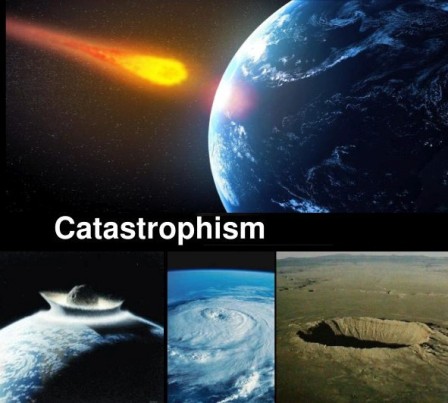
“Criticism”
Mostly restricted from responding to his opponents in journals, blackballed for no good reason by mostly space junkies like astronomers and physicists, the lack of an opponent able to fight back didn’t stop his critics from jumping on a defenseless man. One of these unfair fights that particularly perturbs me is the famous “refutation” of Velikovsky by half-wit Spokesperson For The Stars himself, Carl Sagan. So perturbed am I that right here and now I cut and paste the best of UFOnaut Sagan’s “famous arguments” against Velikovsky’s ideas (see here), and then proceed to quickly dispatch with their inanity. All this just to give an example of just how bad the criticism against Velikovsky has been. In so doing we will find out more about catastrophism.
Here are some of Carl Sagan’s problems with Worlds In Collision. Sagan’s words will be in italics and offset as quotes. In answering Sagan’s objections we will get a good introduction to Velikovsky’s ideas concerning our overall subject matter, the origin Of Man.
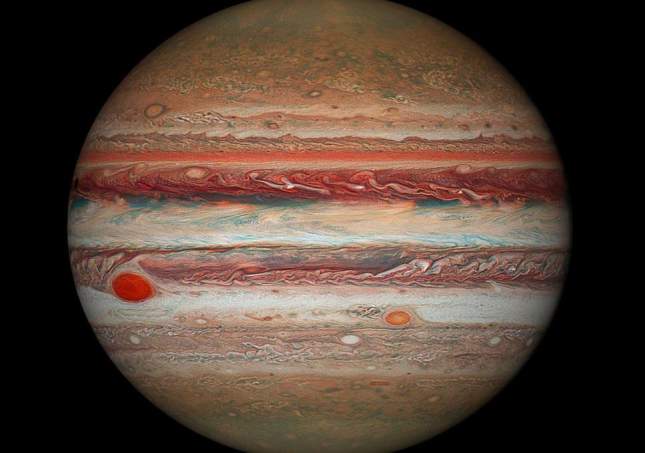
On The Ejection of Venus by Jupiter
[n.b.: This was a working hypothesis for Velikovsky, not a conclusion]
Sagan: Velikovsky’s hypothesis begins with an event which has never been observed by astronomers and which is inconsistent with much that we know about planetary and cometary physics, namely, the ejection of an object of planetary dimensions from Jupiter…any event which would have ejected a comet or a planet from Jupiter would have brought it to a temperature of at least several thousands of degrees…
Answer: There is no proof at all for this last statement by Sagan. As for the rest, astronomers need not have been around to observe it, or ever seen it, and it might not have been visible to any astronomers when it did occur. No one “had seen” the nearly 18,000 new wildlife species discovered the past few years alone, and no one has ever seen rock turn into diamonds but we assume it happened. So his logic is an unimaginable poor. Also, there is no legitimate evidence at all that an ejection from Jupiter would need to be accompanied by high temperature.
Sagan: The likelihood of a planet, much less an icy comet, surviving ejection seems small.
Answer: Ejection, breaking-off, both are possible, as one could argue is evidenced by all the smaller wandering celestial bodies, meteors, and so on, which exist in the universe. We are talking about a planet very far from the heat of the sun, and since the actual temperature inside any planet, even our own, is surely conjecture itself, what is the point of this objection? Sagan also never makes mention of those liberties taken, and those of of his mindset accept with no reservations, like the unlimited, wide open pure speculation about what “life on other planets” MAY – and I stress MAY – look like.
___________________________
Books by Immanuel Velikovsky
Worlds in Collision (1950)
Ages In Chaos I: From The Exodus To King Akhnaton (1952)
Earth In Upheaval (1956)
Oedipus and Akhnaton (1960)
Peoples of the Sea (1977)
Ages In Chaos II: Ramses II and His Times (1978)
Mankind in Amnesia (1982)
Stargazers and Gravediggers: (Memoirs To Worlds In Collision, 1983)
The Dark Age of Greece (posthumous)
-Also be sure to read The Velikovsky Affair, the Amnesia Papers, and his correspondence with Einstein.
___________________________
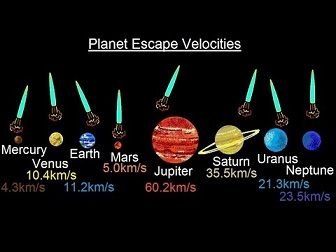
Sagan: Another problem is that the escape velocity…There is only a narrow and therefore unlikely range of velocities which is consistent with Velikovsky’s hypothesis…
Answer: You are talking here about a planet which is likely only gas and which has little atmosphere as we know it. Sagan argues that the escape velocity required (by his estimations…there could have been other influencing factors as well, like moons, other planets, comets, etc.) is highly improbable, but what is notable is that he allows its narrow possibility nevertheless. In truth, Jupiter needn’t be a planet with high gravi-tational pull, and new research seems to indicate the opposite is the case. That we can today, with our limited combustion and means of achieving velocity, ourselves break the very strong gravity of the Earth (the “Spirit of Gravity,” indeed…) should attest to the ease with which escape velocity can, and continues to be, accomplished. Notable by omission, with all this talk about the largest planet in our solar system, is that there is no recognition by Sagan of Velikovsky’s having accurately predicted, against all other opinions to the contrary, the radio emissions from Jupiter. That Sagan’s was one of these contrary opinions explains why. Nitpicking, these arguments against Velikovsky. That’s what I’d call it.
Sagan: A further problem is that the mass of Venus is very large…The total kinetic energy required to propel Venus to Jovian escape velocity…is equivalent to all the energy radiated by the sun to space in an entire year…an ejection event vastly more powerful than anything on the sun.[1]
Answer: This is Sagan’s most valid criticism, sad to say, but again it is based on his own unproven “calculations” and generic preconceptions and biases about the cosmos. That his critique does not take the influence of celestial catastrophes into consideration is a notable omission. I think Velikovsky’s point was that Venus eventually solidified, that is, it was at first a semi-solid, an ejected gas that only formed into solid matter later on as it began to cool.
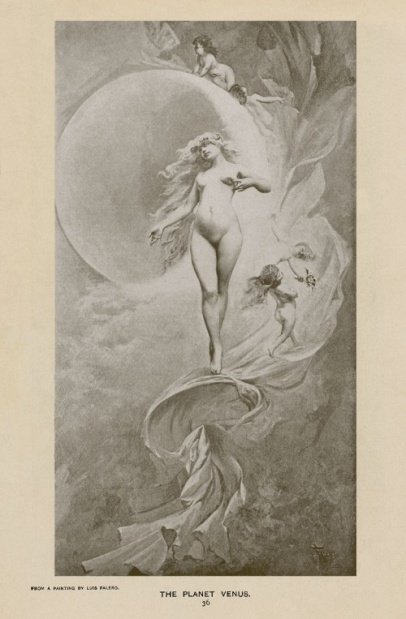
Notably, Velikovsky was one of a scant few (the truth is debatable, he may have been the only one) who predicted correctly what the surface temperature would be on Venus, besting Sagan on that account as well. Nearly everyone expected a much lower temperature than the 900 or so degrees measured there.
That “gravity” might indeed be an electromagnetic process, as once only Velikovsky maintained, is also somehow ignored.
His critics also seem to forget that, not unlike their own speculative enterprises, it is an hypothesis Velikovsky is putting forward, a theory just like the Big Bang which is fast becoming mockable ancient history, but which still remains gospel to Sagan and millions of others like him. Sadly, none of the criticisms levied against Velikovsky deal with his most important ideas, especially those which maintain, I believe correctly, that there is evidence all over the Earth for periodic global upheavals. Whether these upheavals were due to chance, or extra-terrestrial, celestial, or divine orders is the real issue, and also a tack no one has yet taken, and so thereby attempt an actually reasonable commentary on Velikovsky’s ideas.
Remember that tropical trees have been unearthed from under the Sahara Desert, and Libyan deserts hold the oldest fossilized trees, remnants of a great forest, indicating that this current wasteland was once almost tropical. Also keep in mind that it is becoming more and more believable that at one time the Pillars of Hercules was not as open as they now are – see Plato’s discussion of Atlantis in Timaeus, e.g. Floods don’t happen gradually, and evidence of entire flash-frozen animals ought to be evidence enough of global upheavals in the Earth’s history. There is a big difference between “the sea is receding at 2 inches a year” and an entire 8000 square mile forest being completely submerged under water relatively overnight.
Defending him here against Sagan we can only say that Velikovsky was talking about just a temporary rocking of the axis being enough to cause such upheavals. How or why, he only guessed about, and admits as much in his writings.
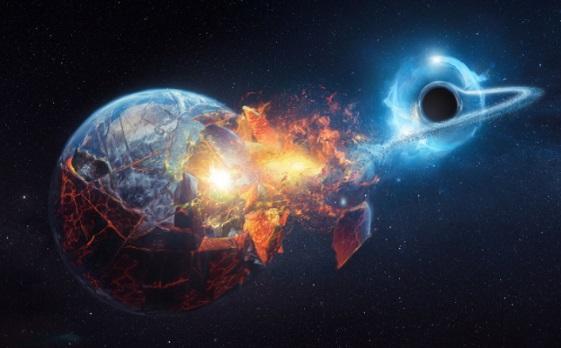
On Collisions Between the Earth, Venus, and Mars
Sagan: That a comet may strike our planet is not very probable, but the idea is not absurd…This is precisely correct: it only remains to calculate the probabilities, which Velikovsky has unfortunately left undone.
Answer: Of course it’s possible, if meteors can why can’t comets? We have evidence of that big one in Arizona, for instance. If we were to calculate probabilities, it is almost magical, is it not, considering all the stuff traveling in space, that we are not hit more frequently? Furthermore, at least according to the “experts”, many rocks really from outer space origin have been found here on Earth.
-
Sagan: …the odds against a collision with the Earth in any given year is 3 x 107 to 1; the odds against it in any given millennium are 30,000 to 1. But Velikovsky has (see, e.g., page 388) not one but five or six near collisions […] If the probabilities are independent, then the joint probability of five such encounters in the same millennium is on the short side of (3 x 107/103)-5 = (3 x 104)-5= 4.1 x 1023, or odds of almost a hundred billion trillion to one [..] Hypotheses with such small odds in their favor are usually said to be untenable.
- Answer: Sagan is not mentioning that it is really near-collisions that Velikovsky talks about the most. Sagan’s numbers given here are for an actual collision. Sagan’s numbers also have no base, that is no set of existing data on which to base these probabilities. He cannot tell you how many collisions there have been, in fact he might as well run numbers off the top of his head considering the absence of any such data. There is also a reverse probability problem that needs to be worked out, such as the odds that we are not hit.
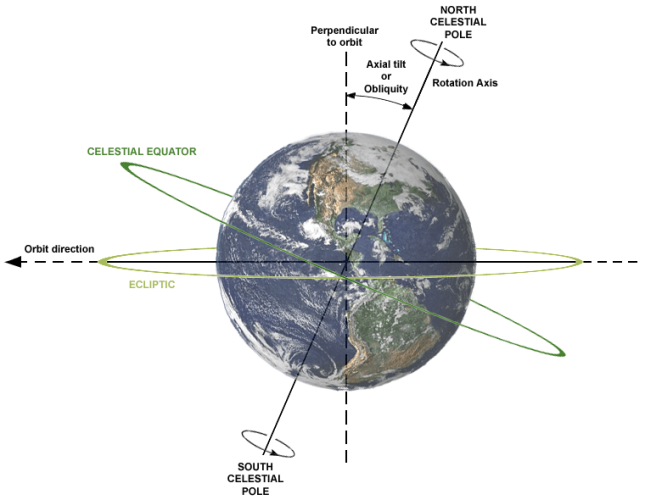
On The Earth’s Rotation
Sagan: Much of the indignation directed toward Worlds in Collision seems to have arisen from Velikovsky’s interpretation of the story of Joshua and related legends as implying that the Earth’s rotation was once braked to a halt…we see in Appendix 2 that the energy required to brake the Earth is not enough to melt it, although it would result in a noticeable increase in temperature: the oceans would have been raised to the boiling point of water, an event which seems to have been overlooked by Velikovsky’s ancient sources.
- Answer: Another misdirection play by Sagan that reveals his real motives and the main problems “Parrot Corps” scientists had, and still have, with Velikovsky. Namely, they don’t like those, like Velikovsky, who give validity to Biblical history. This is really the signal of the atheists, in this case the alien and extraterrestrial-loving, Evolution-embracing theoretical scientists, like Sagan. They are here, or surely Sagan is here, arguing unfairly against another fellow scientist, one who, based on his own research and on the written history of those who came before him, has quite different ideas.
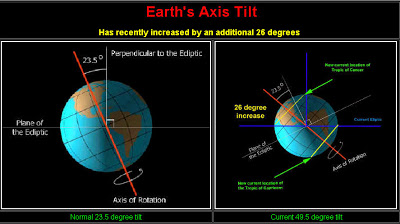
- It must be remarked that at least Velikovsky’s position has some basis in verifiable fact.
- The answers science and academia give for the big questions like the age of the Earth, our distance to the next galaxy, number of planets other stars have and whether they be planets at all, and so on, are all estimations based on the current limits of their measuring capabilities. We have discussed this in chapters prior. The odds of there being water on other planets is another one often brought up but never proven in any way. Why hold Velikovsky to standards “generic” science doesn’t adhere to, and so what if the temperature had to rise to boiling at some point in our history? Records of volcanoes and such prove this to be a very plausible proposition.
Sagan: Perhaps the most serious objection is rather at the other end. How does the Earth get started up again, rotating at approximately the same rate of spin? The Earth cannot do it by itself, because of the law of the conservation of angular momentum…Velikovsky is vague about the mechanism which is supposed to have braked the Earth’s rotation.[1]
- Answer: Assuming the Earth is spinning on its own by virtue of its position amidst the surrounding celestial bodies, it is VERY conceivable that a gravitational disturbance could alter this spin. Even one small deviation, for any length of time, would be enough to disturb life as we know it. The odds AGAINST such an event ever happening are also very remote, the probability very low, especially given the age this very same accepted science gives for our planet.
-
NOTE: The law of conservation of angular momentum states that when no external torque acts on an object or a closed system of objects, no change of angular momentum can occur. Hence, the angular momentum before an event involving only internal torques or no torques is equal to the angular momentum after the event. This conservation law mathematically follows from continuous directional symmetry of space (no direction in space is any different from any other direction). [Google]
- Nothing there, it seems to me, eliminates any stabilizing, or even resetting of the orbit after a disturbance. In a sense the law of angular momentum is not applicable here because Velikovsky is indeed talking about external torque.
- Why these silly objections against Velikovsky? Because belief and clout are at stake. While evidence for Velikovsky’s views could be found in the truths of the written words, and this world is, in most legends, a God-made world, Sagan’s beliefs are notably atheistic. This is a perfect example of Scientific Dogma, the New Religion without a God, that overriding theme we have discussed so many times already. It is a shame science cannot bring itself to at least consider human history, especially when it discusses eternal questions like those concerning the origin of the Earth and of Man.
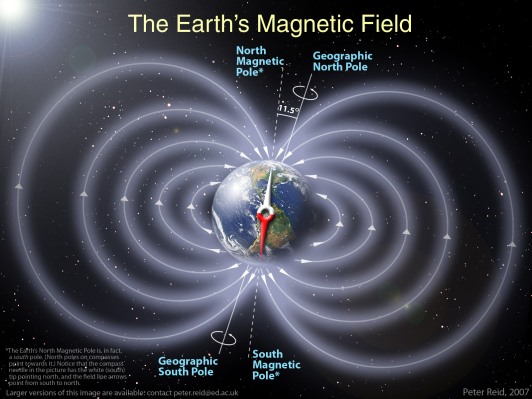
On Terrestrial Geology and Lunar Craters
Sagan continues his whining:
Velikovsky believes (page 115) that reversals of the geomagnetic field are produced by cometary close approaches. Yet the record from rock magnetization is clear – such reversals occur about every million years, though not in the last few thousand; and they recur more or less like clockwork.
- Answer: No, incorrect, Velikovsky said that they could be caused by such an event, not that they did. Sagan is also making the common mistake in thinking that everything in the past occurred and changed at the same rate which it does now. This on its face eliminates any possibility of what Velikovsky is saying’s being understood.
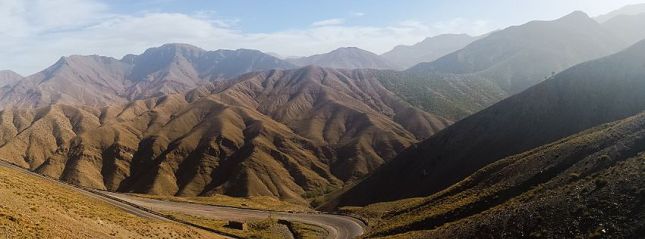
- Sagan relies on a belief system based on shaky foundations and questionable science. And even were Sagan’s worldview be true, would this not be an admission that such reversals as mentioned by Velikovsky do take place? Sagan therefore concedes the point to Velikovsky:
-
Sagan: Velikovsky’s contention that mountain-building occurred a few thousand years ago is belied by all the geological evidence which puts those times at tens of millions of years ago and more…
- Answer: Again, a reading into Velikovsky’s ideas what is not there. Velikovsky’s contention is that MANY mountains are relatively new, not all, and that this is undeniably the case is borne out by, for examples, our finding contemporary fish at the tops of the Andes, crustaceans on mountains in America, and remnants of cities found beneath the seas. That geologists today want to say that these mountains ROSE UP from the ground can explain perhaps some of them, but definitely not all. Ancient lore has it that as far as mountains in general are concerned, they are a relatively new development in a geographical history of Earth that shows all evidence of its having, for the majority of its existence, a relatively flat topography.
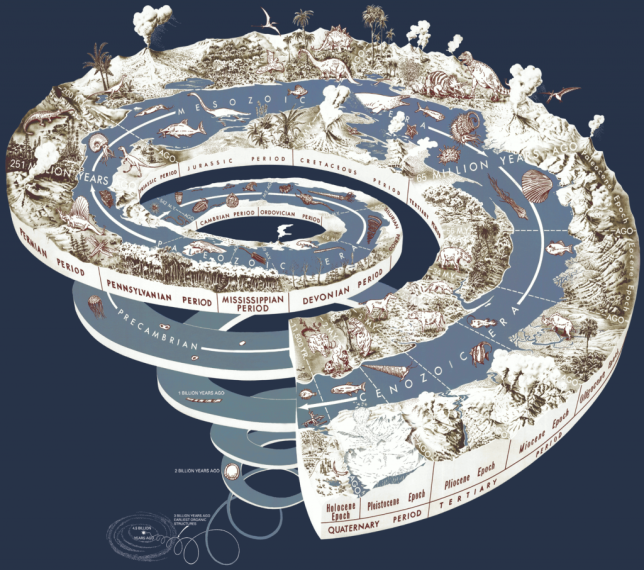
- Ask Sagan how he or any other astronomer or geologist REALLY knows the age of the Earth. Must we relive our excursion into the failed dating methods we have, and actually use, for such “rounded-off” millions of years science likes to assign to such things, varying often by hundreds of thousands of years from scientist to scientist? He need not agree with his ideas, here about the age of the Earth’s mountains, but Sagan certainly should not say Velikovsky’s claims are unscientific when all he does is support his opinion at every turn with evidence from history and science. If that is not science I don’t know what is.
Sagan: Velikovsky believes that the close passage of Venus or Mars to the Earth would have produced tides at least miles high (page 70 and 71); in fact, if these planets were ever tens of thousands of kilometers away, as he seems to think, the tides, both of water and of the solid body of our planet, would be hundreds of miles high…To the best of my knowledge, there is no geological evidence for a global inundation of all parts of the world either in the eighth or in the fifteenth centuries BC.[1]
- Answer: Again, no good proof exists for what Sagan himself is saying (and using as counter-evidence) given our atmosphere and celestial position, and again he just affirms in a different way the same thing Velikovsky does, that there would be extremely high tides. The proximity would make all the difference.
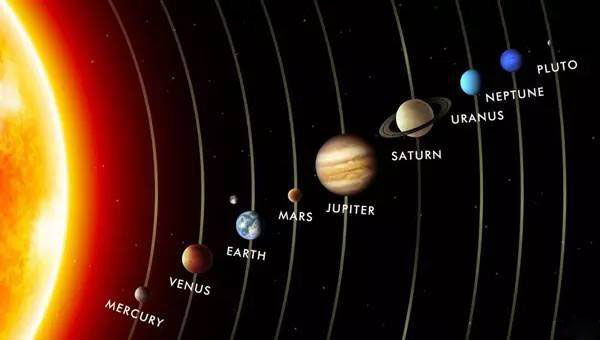
On Planets
Sagan: Even stranger are Velikovsky’s views on extraterrestrial life. He believes that much of the “vermin,” and particularly the flies referred to in Exodus, really fell from his comet – although he hedges on the extraterrestrial origin of frogs…The idea that of all the organisms on the Earth, flies alone are of extraterrestrial origin is curiously reminiscent of Martin Luther’s exasperated conclusion that, while the rest of life was created by God, the fly must have been created by the Devil because there is no conceivable practical use for it…Next there is the problem of fly ablation. Small flies have just the same mass and dimensions as small meteors, which are burned up at an altitude of about 100 kilometers when they enter the Earth’s atmosphere on cometary trajectories.[1]
Answer: Here Sagan takes the most controversial aspect of Velikovsky’s ideas, and what is essentially an aside, and uses it to attack the entire theory as invalid. To defend Velikovsky here, the “seeding” of the Earth now has quite a few adherents, panspermia is one such idea gaining popularity in even scientific circles. To clarify, Velikovsky was saying that such a disturbance could be responsible for mutations. The argument Sagan is parroting is actually a mistaken, one could say fantastic argument from Martin Gardner, himself with as many axes to grind as Sagan.

On The Manna
Sagan complains on:
How much manna is required to feed the hundreds of thousands of Children of Israel for forty years (see Exodus 16:35)? …during the forty years of wandering, the whole Earth must have accumulated several times 1018 gm of manna, or enough to cover the entire surface of the planet with manna to a depth of about an inch…we find that the mass of manna distributed to the inner solar system by this event is larger than 1028 gm …Therefore, the mass of the comet must be much larger than 1031 gm. This is the mass of Jupiter.[1]
- Answer: Sagan loves using exponents because he knows nobody really likes to play with the mathematics. He never says how he derives any of these numbers, nor does he summarize accurately the suggestions made by Velikovsky in this regard. Velikovsky was merely suggesting a possibility and, when it comes to theorizing, and especially considering the liberties taken with such license today, this must be allowed. Yes, it is true, as I have been suggesting, that Velikovsky is using personal beliefs, perhaps even prejudices, to construct the framework of his theory. We have discussed already the problems with this affecting most science in general. Velikovsky is, also admittedly, at his weakest theoretically when he talks about the “vermin” and the “manna”, but it is also proven fact that on numerous occasions thus world has seen strange objects, animals, and objects of an edible nature fall from the skies. I don’t buy into Velikovsky here either, but just look at those imaginary numbers Sagan supplies.

On The Clouds of Venus
Sagan: Velikovsky’s prognostication that the clouds of Venus were made of carbohydrates has many times been hailed as an example of a successful scientific prediction. [..] Moreover, the question of the composition of the Venus clouds – a major enigma for centuries – has recently been solved (Young and Young, 1973; Sill, 1972; Young, 1973; Pollack et al., 1974). The clouds of Venus are composed of an approximately 75 percent solution of sulfuric acid. [..] These observed features are inconsistent with the hypothesis of hydrocarbon or carbohydrate clouds. … In summary, Velikovsky’s idea that the clouds of Venus are composed of hydrocarbons or carbohydrates is neither original nor correct. The ‘crucial test’ fails.[1]
Answer: I’m still not sure that Velikovsky confuses hydrocarbons and carbohydrates, I am sure though that carbon is an element in both. If rain is drinkable, it is plausible that something edible might come from above. Not likely, but possible. The new science (not so sure, by the way…) of which Sagan speaks is about Venus today, as it is, not as it was, and which Velikovsky talks about. This type of malicious criticism is for me decidedly unscientific. You can even insult and call names, as I see it, just include a valid point when you do so.

On The Temperature Of Venus
Sagan: [Velikovsky] baldly states, “Mars emits more heat than it receives from the sun,” in apparent consistency with his collision hypothesis. This statement is, however, dead wrong.
Answer: Well, maybe yes and maybe no. What he meant was not something resembling a constant thermal exhaust, what he meant was Mars gets hardly any sun and is very cold, but somehow warmer than it should be given its position. In this also, he has yet to be proven incorrect. Sagan, it must be made known, was one of many scientists who were wrong about the temperature of Venus while Velikovsky was correct. Here now more of Sagan’s childish attempt at discrediting Velikovsky by again latching on to something admittedly controversial.

Sagan: Velikovsky nowhere states the temperature he believed Venus to be at in 1950. On page 77 he says vaguely that the comet that later became Venus was in a state of ‘candescence’…Velikovsky writes in the 1965 preface that his claim of a high surface temperature was ‘in total disagreement with what was known in 1946.’ This turns out to be not quite the case. The dominant figure of Rupert Wildt [a.k.a. Wild] again looms over the astronomical side of Velikovsky’s hypothesis. Wildt, who, unlike Velikovsky, understood the nature of the problem, predicted correctly that Venus and not Mars would be “hot.” In a 1940 paper in the Astrophysical Journal, Wildt argued that the surface of Venus was much hotter than conventional astronomical opinion had held, because of a carbon-dioxide greenhouse effect.
Answer: There is some evidence that Velikovsky might have used some of Wildt’s ideas. That Wildt concurred with him regarding the temperature on Venus, or even who got it from whom, doesn’t detract from what Velikovsky predicted, at least louder than Wildt, and some speculation would say Wildt got his idea from Velikovsky. It also ought be mentioned that Wildt abandoned his similar idea.
Even if the most accurate prediction of Venus’ temperature did come from Wildt, it sure didn’t come from Sagan or his predecessors, who wouldn’t dare challenge the science-quo. This criticism, like that of Tim Callahan, who argues against Velikovsky because to date no “hydrocarbons” have been found on Venus (as he predicted), take one tiny aspect of Velikovsky’s work, admittedly controversial at that, and use it like a club to beat down the whole theory. Bear in mind these are the best arguments against Velikovsky, and notice how so much time his critics put into refuting what would otherwise be seen as no more than the delusions of a crackpot (see Velikovsky Affair). It is important for these people to say Velikovsky is wrong because of how damaging, if true, his ideas would be to the standing science, and makes it vitally important he be refuted no matter what it takes.
Sagan: A repeated claim by Velikovsky is that Venus is cooling off with time…We see that there is not the faintest hint of a decline in temperature with time.[1]
Answer: For all the, what, 50 years we’ve been able to study it with any kind of accuracy?
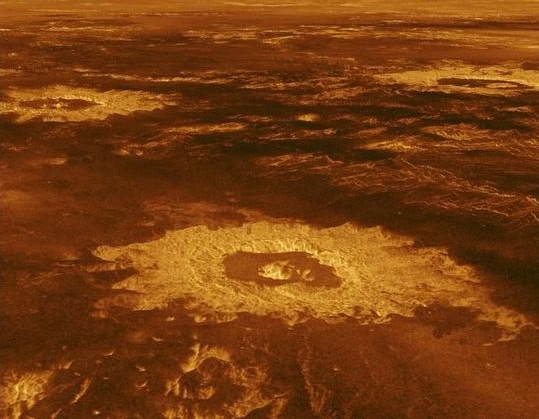
On The Craters Of Venus
Sagan writes:
In 1973 an important aspect of the surface of Venus was discovered by Richard Goldstein and associates, using the Goldstone radar observatory of the Jet Propulsion Laboratory. Goldstein et al. found, from radar which penetrates Venus’ clouds and is reflected off its surface, that the planet is cratered, and, perhaps, like parts of the moon, is saturation-cratered – that is, so packed with craters that one crater overlaps the other…The clear conclusion from the craters of Venus is, therefore, that Venus has been for billions of years an object exposed to interplanetary collisions – in direct contradiction to the fundamental premise of Velikovsky’s hypothesis.[1]
Answer: Billions of years? So we can know what has been happening on the planets for billions of years? That is just too funny a conclusion, based on wisecracking and empty wild guesses.
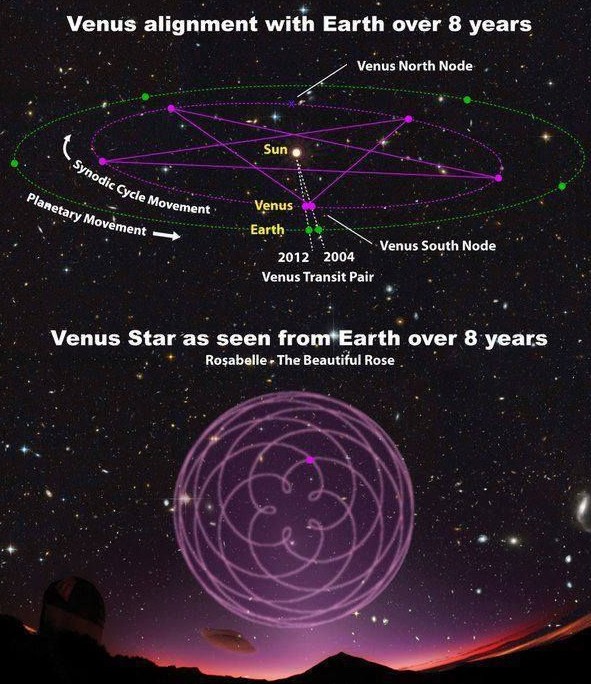
On The Circular Orbit of Venus
Sagan: The idea that Venus could have been converted, in a few thousand years, from an object in a highly eccentric orbit to its present orbit, which is, except for Neptune, the most nearly perfect circular orbit of all the planets, is at odds with what we know about the three-body problem in celestial mechanics.[1]
Answer: So what? As anyone should be able to see by now, these arguments are just tiring and nitpicky and unbefitting professional scientists.
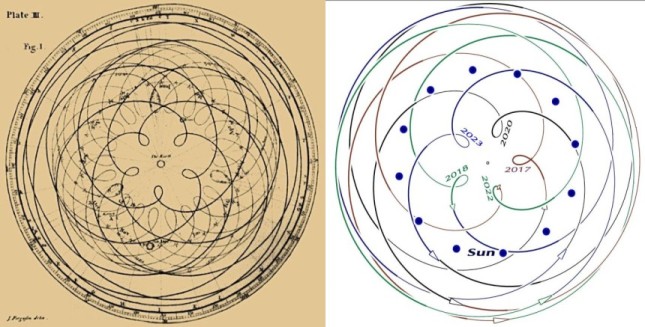
Other Criticisms of Sagan’s Arguments Against Velikovsky
Critics of Carl Sagan’s paper contend that it contains errors and inaccuracies. So you see it’s not just me here are three such criticisms:
Sagan’s ten points — the phrase “ten plagues” had been suggested by a remark King made following Sagan’s talk — consumed some 37 manuscript pages. A brief enumeration follows. (This enumeration, by extracting the ten basic arguments from the nearly impenetrable mesh of error in which they were embedded, performs a considerable service for Sagan).[2]0
-The editors of Pensée
———-
[Sagan’s] paper was presented exceptionally well, and his charisma added to the effectiveness of the presentation. Most of the audience did not know and, because of his captivating delivery, did not care that many of his points were irrelevant, incorrect, or misleading [..] Some of his pre-AAAS meeting comments were drastically revised for the paper given at the meeting. After many fallacious points about his paper were revealed in Pensée, the paper was again corrected. [3]
-Physicist and author of the book, The Age of Velikovsky (1976), C. J. Ransom
———-
Having read Velikovsky, I also read Sagan’s paper; I thereafter discovered that a group of scientists and scholars had written critiques of Sagan’s analysis. After reading these criticisms I began a search of the literature and over a period of time I became convinced that Sagan’s critique lacked substance. Most surprising was the number of statements made by Sagan that proved to be clearly untrue. Further reading reinforced this discovery of the glaringly unscientific and unscholarly quality of Sagan’s paper. What was much worse, was that it was difficult to imagine that even Sagan was unaware of the misrepresentation of evidence presented as scholarly criticism by him and offered to the public.[4]
-Author of the book, Carl Sagan and Immanuel Velikovsky (1995), Charles Ginenthal
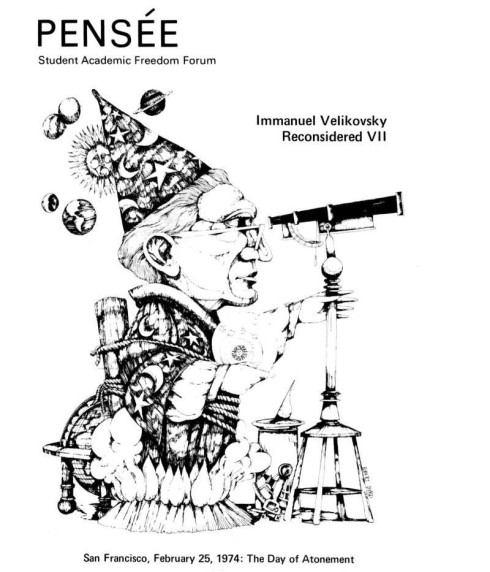
Summary
Velikovsky was given the scientific snub for his attempt at what they saw as under-mining accepted contemporary thought, and for trying to, in a sense, rewrite history. But he remains one of the first to take on many challenges, such as questioning the accepted Egyptian chronology of Manetho, and reworking it to coincide with other (predominantly Old Testament) dates; the problems with Manetho’s dating are very real and, considering its significance to dating history, deserved some questioning.
So, to recap, Velikovsky was a pioneer thinker who used history and particularly his Judaism as his starting point for his ideas. While I think he is under-represented in discussions of great thinkers, and a symbol or ostracism courtesy of accepted science, I think the illegitimate criticisms of him have distracted attention away from his many real significant ideas.
As we have seen, whenever what is put forth goes against this accepted science, a challenge and then corresponding defense should ensue; in the case of Velikovsky, this has not been the case. It is true that Velikovsky several times in his works oversteps his bounds and hurts his case. He also tries too much to rely on the scientific method, and had he presented his ideas as did our next player, Gurdjieff, he would today have less scientific clout, but many more readers.
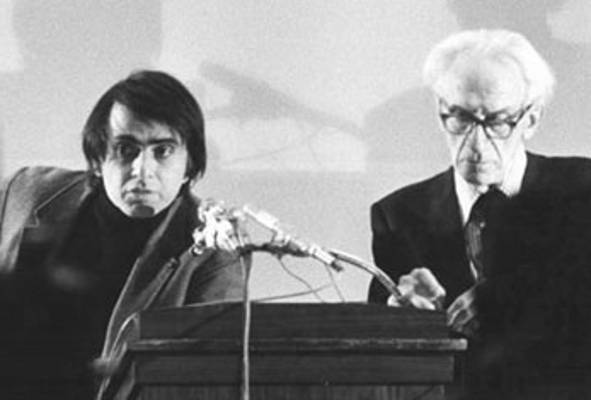
What we have learned is yet again that too many alleged unbiased and objective scientists and thinkers nevertheless show evidence of prejudice and lack of objectivity, whether due to their religion, previous training, or current allegiances. Like the rest Velikovsky retains his objectivity only to a point. But, as also seems to be the case with Sitchin and Gurdjieff, Velikovsky’s pre-existing beliefs provide the catalyst for his ideas.
Since Velikovsky, genius as he was, interesting and volatile as he remains, never really mentions much about human origins per se, we must be content with the picture of early human history as he lays it out for us. He is also a big help to us in confirming how science as we know it is a clique, a social club, and that what we believe is in the main what most scientists and thinkers believe, regardless of the actual merits of those beliefs.
Myself I much prefer honesty, and Gurdjieff, yet our fourth thinker of this section, also of Jewish upbringing (like Velikovsky and Armenian like Sitchin), for whatever his scientific merits, as you will see, provides a whole lot of that.
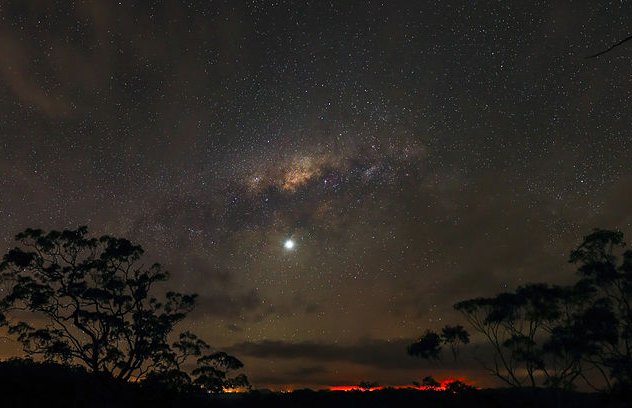
Revised 2-2019



